Sustainability Ranking for Large Companies Announced at World Economic Forum


Framing the perfectly sustainable company has always been a challenge, but never one that Toronto-based Corporate Knights has shied away from. The well-known media and financial products company released its eighth annual tally of the top 100 multi-billion-dollar companies this week. And there was no better place to announce the findings than the World Economic Forum, in Davos, Switzerland.
It's a heady list of who's-who from every corner of the industrialized world. The U.S., which was represented by 20 companies, took the lion's share of kudos.
The top 100 big companies were culled from a list of 4,619 entrants that had a market capitalization of at least $2 billion. The rating system looked at 12 key performance indicators, including but not limited to: energy, water, waste and carbon productivity; leadership diversity; inovation; and CEO-to-worker pay equity. It also examined each company's financial sustainability, the kinds of products it manufactures or services it provides, and any sanctions it may have accumulated in relation to the above standings. A full breakdown of the strategy Corporate Knights used in the evaluation is available in its overview of methodology.
At the top is Biogen Idec, a pharmaceutical company that researches and produces treatments for autoimmune, hematologic and neurodegenerative conditions. Biogen is responsible for breakthroughs in the treatment of some of the world's most pervasive and debilitating diseases, such as multiple sclerosis, hemophilia and leukemia. The company is also in trials for a treatment for Alzheimer's. Corporate Knights awarded it a score of 73.5.
Key strengths that contributed to its score, says Corporate Knights in its profile of the winning company, include:
- Economic standing: Its revenues are up 26 percent from 2013, when it reported earnings of $6.9 billion;
- A cogeneration unit that reduces Biogen's reliance on the grid;
- Four new gold or platinum buildings to help it reduce its carbon footprint and conserve energy
Diversity in its senior ranks was one area in which Biogen could have scored higher. Its women-to-men ratio was only 17 percent, although the ratio on its board was higher (27 percent). Biogen's CEO George Scangos acknowledged that this was a goal the company needed to improve.
Irvine-based Allergan, the No. 2 company on the Corporate Knights list, scored 72.8. The pharmaceutical company is best known for its botox injections but is also a groundbreaker in ophthalmic (eye) treatments.
There were also a few surprises on the list. Textile and footwear manufacturer Adidas came in third with a score of 72.6. Adidas has been criticized in the past for labor practices, specifically relating to last year's labor conflicts in China. Still, its progress on the environmental front appears to be improving. In 2014, it laid out a plan to become "toxic free" by 2020. According to Greenpeace, it is making strides on this, which likely contributed to its No. 3 ranking.
"Approach [is] driven by data not by judgment," states Corporate Knights.
And there were some surprises at Davos, as well. While labor diversity is now considered a key factor in determining sustainability, its prominence seemed to be underplayed at the World Economic Forum. According to an article in the Guardian (sponsored by The B Team), only 17 percent of the delegates were women.
"Davos is both a victim and an indicator of its surrounding reality," notes author Omid Aschari, who is a professor of strategic management and the managing director of the SIM-HSG Master’s program at the University of St.Gallen, Switzerland. "The business world is only slowly coming to understand that leadership, in essence, is about walking the talk."
Perhaps Corporate Knights' focus on diversity, and the companies that strive to excel in this area, will set new benchmarks at the 2016 World Economic Forum as well.
Biogen Idec logo: Biogen Idec
Image: Davos Intercontinental Hotel - Kecko
5 Ways to Make Sustainability Reporting More Sustainable
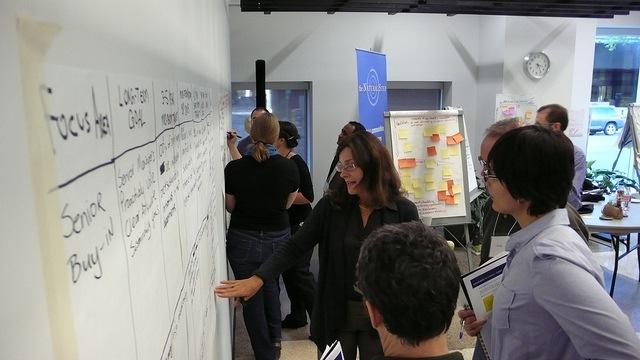

Editor's Note: A version of this post originally appeared on the CSR-Reporting blog.
Is sustainability reporting sustainable?
There are some that think it is. The practice is now more widespread than ever before, and legislation in different parts of the world is supporting increased non-financial disclosure. This would indicate that reporting is here to stay.
On the other hand, there are some that think it isn't. There are those who subordinate sustainability reporting to the new financial reporting trend called integrated reporting, while others advocate online interactive disclosures instead of reports.
As we move into 2015 and face another year of corporate efforts to improve impacts, manage risk and engage with the new opportunities that sustainability brings, amid a flurry of surveys and reports that support the case for or against sustainability reporting, what can companies do to embed reporting practice in a sustainable manner? In addition to the predictable list of things we already know -- focus, clarity, materiality, relevance, balance, frameworks, etc. -- here are some more creative approaches that companies might like to consider.
Excite your board of directors about reporting
Reporting has often been considered an add-on, a project for the corporate social responsibility (CSR) manager, something that exists alongside the "real" reporting processes. Sustainability reporting has not really hooked the attention of the highest level of leadership and, in most cases, does not find its way onto the board agenda.
In order to make reporting more sustainable, directors must be excited about sustainability reporting. They must see it as an advantage, a benefit, a value-adding activity -- and not something they tolerate.
Let's be honest, how many company directors actually read the sustainability reports of the companies they are engaged to be accountable for? How many directors are actually consulted in the process of preparing the report? As key stakeholders, company directors surely deserve some acknowledgement, recognition and even voice in the annual sustainability report.
In order to excite your board of directors, engage them in the reporting process and have them approve the output, here are some things you can do:
- Empower your board members. This can be done, for example, through board workshops to build awareness, knowledge and engagement around relevant issues for each company. In 2014, the United Nations Global Compact launched an interesting Board Program to help align the board on sustainability matters and help directors demonstrate leadership on board adoption of sustainability principles. As board members engage in deep consideration of sustainability issues, they become empowered to embrace leadership and guide the company along the sustainability journey. This program looks like a good start, but it must result in something more than discussion in order to truly deliver change. Therefore, after education, comes action.
- Engage company directors in the reporting process. Help your board of directors own your sustainability report by asking them to contribute. Interview them individually or as a group, and include their pictures and their commentaries in the sustainability report. Stakeholders will be gratified by evidence of greater board commitment, and board members will be energized by their own involvement and declaration of what is important to them. Involving them may also help reinforce their accountability for the sustainability report and its contents. This kind of involvement is positive, but it is not enough. Involvement must be formalized.
- Establish and publish a formal board policy for sustainability reporting. This should describe board accountability for sustainability reporting. The policy should define board actions prior to report publication, including a board discussion and concurrence of the report content and agreement to publish. Following the report publication, the policy could require the board to conduct a review of whether the report has met its objectives and agree on new objectives for the next reporting cycle.
Make your reporting process cool
I maintain that sustainability reporting as a process is incredibly cool. The right process empowers people, challenges people, gets people listening to one another, sometimes even talking to one another, occasionally even agreeing with one another. This applies to both employees as well as external partners, organizations, suppliers, local authorities and consumers.
Rather than inviting people to a meeting about the sustainability report (yaaaaaaawn!), there are many ways you can involve people in activities that both interest and engage them, while at the same time, getting the information you need for your report. This includes competitions (send us a video of how your job contributes to improving the environment) or prizes (weekend for two for the first complete set of sustainability reporting information sent back to corporate) or ice cream meetings (roundtable discussions with internal and/or external stakeholders on sustainability issues, where the meeting leader brings [lots of] ice cream for consumption during the meeting). There are a million ways to make the reporting process fun, even if, at some point, there is a certain amount of actual hard work to be done.
Engage your employees around the published report
So, many reports go unnoticed by the very employees whose hard work made the report possible. That means all the employees in the company.
The minute the report is published is the signal to start the work of engaging employees around the report. Rather than just broadcasting an email announcement -- we published our report (yaaaaaaawn!) -- there are many ways to get your employees to sit up and take notice.
This may include quizzes with prizes (Who is quoted on page 34 of our last report? By how much did our GHG emissions reduce last year?), games (How far can you throw our sustainability report?) and feedback (cross-functional discussion groups -- can be Web-meetings -- each focusing on a single section of the report and analyzing the content together, with recommendations for the next report). You might even involve your employees' children in preparing a poster about how your company makes a positive contribution to the world -- requiring employees to explain the essence of the report messages to their kids. Prizes, of course, for the best contributions.
Each company can find its own way to be creative in developing an engagement process which both informs and interests employees. You might find employees actually enjoy reading the report and discover things about the company -- and their colleagues -- that they didn't know. More importantly, they will be able to talk to stakeholders about the issues that matter in an informed way.
Drive your reporting throughout the supply chain
How many companies ask their suppliers to contribute to their reporting and engage suppliers once the report is published? More and more, the report of one company is both the start-point and the endpoint of the reports of other companies.
I am not aware of anyone trying to track a product through all the sustainability reports of the companies involved in producing it from raw materials to end-of-life -- that could be an interesting exercise. However, suppliers are big enablers of any business, and their influence on the direct impacts of an organization may be quite significant.
Perhaps suppliers should have a bigger place in sustainability reports -- strategic suppliers can contribute data, case studies and specialist perspectives -- and may be grateful for the recognition their customers' reporting offers them, thereby reinforcing the relationship with them. Once the report is published, reverting to suppliers, emphasizing the key messages, acknowledging their role and encouraging them to adopt sustainable practices in their own businesses is a critical step in maintaining the reporting momentum.
Celebrate reporters
It's so easy to criticize reports. It's so easy to say that reports are full of irrelevant information. It's so easy to dismiss reporting as some sort of activity that apparently everyone has been duped into doing for the wrong reasons and producing the wrong results. It's much harder to stand up for reporting and talk about what it really is: a business process that adds value, engages people and empowers employees.
The folks that lead reporting in organizations have to address not only the hard work of reporting -- and it is hard work -- but they also have to overcome these notions that are bandied around saying reporting is worthless.
Reporting leaders in organizations should be celebrated. They have one of the hardest jobs around. Reporters play a critical role in helping organizations move forward sustainably and help shape the future of business. I have often said that reporting is a catalyst for performance, and great reporters know how to use the reporting process to drive change. Make sure the reporting leader in your organization gets the respect s/he deserves, has the resources s/he needs and gains the attention of management as and when needed. Ringfence your reporter and ensure s/he has enough ice cream to last through the entire reporting cycle.
Good luck to all companies starting reporting cycles about now. Let me know how you got on with this list!
Image credit: Flickr/The Natural Step Canada
Engaged Employees: The Catalysts of Your Company
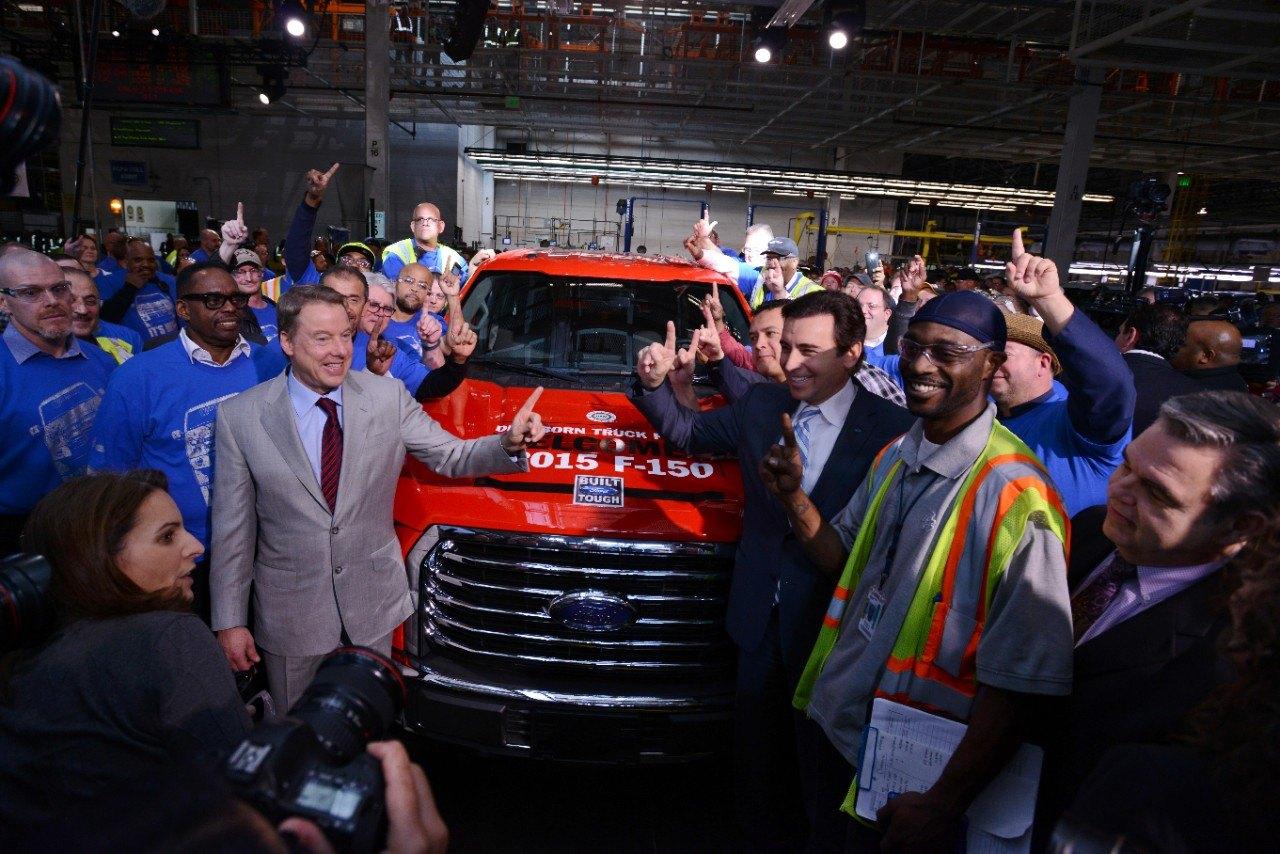

By Daryl Horney
Organizations that really stand out from the crowd deliver on their brand promises every time you interact with them. From thoughtful advertising and a clear, easy online experience to the way they talk or write to you.
Lets face it, though: It’s not easy to do, and few organizations achieve this. At my firm, Instinctif Partners, it’s our belief that being able to display these attributes consistently requires engaged employees -- people who understand the end customer and are behind the brand they are working for.
It appears that the Ford Motor Co. is one of those few organizations; you only have to look at the automaker's numerous awards for its product line-up and the record revenue it has achieved in the past two years to know Ford has got it right.
The company is also the leader in the auto industry when it comes to winning awards and accolades in sustainability, diversity and corporate responsibility. The secret of Ford's success is simple: transparency and trust, open dialogue across and up and down the business, and a clear vision. The net result is: Employees are more aligned with their organizational goals and strategy, and they become emotionally tied to their products and brand … for now.
What we don’t know is whether they have achieved the ‘living brand.’ How often does the promise made by a company in its marketing and advertising fail to match up to the real customer experience? That’s the brand gap. And where one exists, the credibility and fortunes of any business is at risk.
If, however, a company’s promises are delivered by its people at every touch point – in person, on the telephone and via social media, then it’s achieving a “living brand” because it’s the employees who breathe life into a brand.
From a behavioral perspective, the most important way to deliver this strong “living brand” is by engaging your employees with meeting your customer’s challenges. By encouraging employees to see the business from a customer’s point of view, they can identify common causes and frustrations. This process drives the behavioral change needed to deliver on customer promises.
Webcasts and skip-level meetings are fine, and fine only because these efforts are fairly standard ways of engaging employees. We know that to engage employees at a deeper level, to ‘live the brand,’ employee engagement needs a step change which ultimately future-proofs the business. As the cultural and environmental landscapes constantly shift for customers, an organization needs to be 10 to 20 years ahead in its thinking, and employees are the catalysts to drive this thinking, provide customer insight and deliver customer-centric solutions.
At Instinctif Partners we’ve helped unleash the power of an organization’s people at many businesses and in many industries.
One global company gave its people the space to use their knowledge to come up with ideas to solve a major business challenge. The leadership team said at the outset, they would sponsor the best ideas and put money into piloting them for 12 to 18 months.
Effectively, the company championed the problem-solving abilities of its entire employee base. It was an example of smart leadership, but it also created a deeper connection between its people and the brand promise, and therefore the customer.
We know and see, in the case of the Ford Motor Co., that employee engagement is linked to low attrition, higher productivity and improved organizational trust, resulting in employees going beyond the call of duty. We also know an engaged employee takes pride in his or her work, is innovative, looks for challenges and is committed, all of which directly impacts an organizations bottom line.
Behind all winning organizations, such as Ford, there is real focus on employee engagement from the top to the bottom. True leaders know that it’s not just what they sell that will give them the competitive advantage, but also how it is sold. The role of leaders and perhaps to a greater extent, line managers, is huge and encompasses the ability to clearly articulate the vision and goals. These leaders should also give employees the space and time to play an active role in an organization’s future that includes the ability to challenge, innovate and collaborate.
So, whatever Ford Motor Co. is doing now, it is getting it right: Customer opinion is good; the company has a great product line-up, and it is a leader in the industry in diversity and sustainability. However, the future is now, and as Ford employees are shaping its future, will the company continue to engage employees to “live the brand” to the deepest level? Will it continue to be one step ahead of its competition by aligning employees to the brand?
Image courtesy of Ford Motor Co.
Daryl Horney works in strategy and business development at Instinctif Partners.
Palm Oil Giant Launches Web Portal to Make Its Supply Chain Transparent

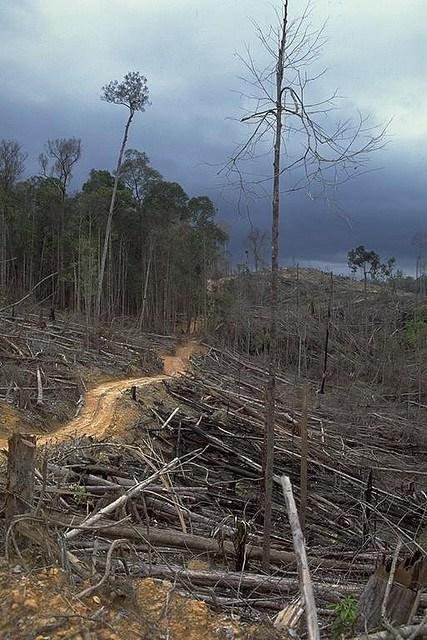
Wilmar International Ltd., the largest palm oil producer in the world, is the first industry player to make its palm oil supply chain transparent via an online platform. The decision is expected to help the palm oil company achieve its goal of eliminating deforestation and exploitation from its operations.
Wilmar mapped out its supply chain and listed all of its palm oil mill suppliers in Indonesia and Malaysia on a dashboard website. The dashboard, which went live last week, is a result of a collaboration with the Forest Trust. The company’s supply chain map shows where its refineries in Indonesia and Malaysia are located, and includes a traceability summary for each one.
The dashboard includes a mechanism to report improper activities. All concerns are logged under the Grievances Procedure, and progress and findings will be reported on the dashboard.
Wilmar began to map its supply chain early last year. Indonesia and Malaysia are the priority because most of the world’s palm oil comes from those two countries. However, Wilmar is also mapping its supply chains in other regions, including Africa, India and China.
The company announced its commitment in December 2013 to stop purchasing palm oil from suppliers whose product is grown on deforested land or who exploit people. Wilmar also signed a pledge, with other industry players, to cut deforestation in half by 2020 and eliminate it in 2030.
Advocates are applauding the company's latest move as a big step forward for the industry:
“Wilmar is the first agro-industrial giant to offer a way to follow palm oil all the way back to the mills where the oil is processed,” said TFT founder Scott Poynton in a statement.“No one has ever aimed for this level of transparency in agriculture commodities. Wilmar has more than 800 palm oil suppliers, so the company covers the bulk of the industry,” added Glenn Hurowitz, chairman of Forest Heroes. “If the online tool released [on Jan. 22] does lead to real engagement between industry, local civil society, and all stakeholders, it will dramatically accelerate the transformation of the palm oil industry.”
The expansion of palm oil comes at a steep environmental price
Palm oil is the most widely used vegetable oil, and it is found in 50 percent of everyday products, ranging from processed foods to personal care products. Over the last few years, global demand for palm oil has greatly increased. There is a reason why: Palm oil is the cheapest vegetable oil to produce and has the highest yield among oil crops, according to Rainforest Rescue. More than 90 percent of the palm oil produced worldwide is used to make food products, cosmetics, detergents and candles.
The increase in palm oil demand has not been good for forests, including rain forests, in Indonesia and Malaysia. Palm oil plantations in Indonesia cover an area the size of Maine at 9 million hectares, and are projected to cover 26 million hectares by 2025. Palm oil plantations are the leading cause of rain forest destruction in Indonesia and Malaysia, according to a report by the United Nations Environment Program (UNEP).
New online tool shows world can cut emissions and live well


Cutting carbon emissions to limit global temperatures to a 2°C rise can be achieved while improving living standards, a new online tool shows.
The world can eat well, travel more, live in more comfortable homes, and meet international carbon reduction commitments according to the Global Calculator tool, a project led by the UK’s Department of Energy and Climate Change and co-funded by Climate-KIC.
Built in collaboration with a number of international organisations from US, China, India and Europe, the calculator is an interactive tool for businesses, NGOs and governments to consider the options for cutting carbon emissions and the trade-offs for energy and land use to 2050.
Energy and Climate Change Secretary Ed Davey said: “For the first time this Global Calculator shows that everyone in the world can prosper while limiting global temperature rises to 2°C, preventing the most serious impacts of climate change.
“Yet the calculator is also very clear that we must act now to change how we use and generate energy and how we use our land if we are going to achieve this green growth.
“The UK is leading on climate change both at home and abroad. Britain's global calculator can help the world's crucial climate debate this year. Along with the many country-based 2050 calculators we pioneered, we are working hard to demonstrate to the global family that climate action benefits people.”
Check out the tool here.
Copenhagen Reveals World’s First Neighborhood Adapted for Climate Change


Copenhagen, Denmark has long been one of the more proactive cities when it comes to planning for climate change. It also happens to be the capital of the country with one of the most advanced clean energy portfolios on earth. And with most of the city only having an average altitude of 30 feet (9 meters) above sea level, Copenhagen is susceptible to storm surges and its temperamental climate. Cloud bursts over the last few years have smacked the city budget — one heavy storm in 2011 alone cost the city about 6 billion kroner, or over US$1 billion. As part of its climate adaptation plan, the city recently revealed what it says is the first neighborhood redesigned to adapt to climate change.
The district of St. Kjeld features a roundabout circling a main square at which seven streets converge. Long a patchwork of asphalt surfaces, the central plaza was typical of most of Copenhagen’s open spaces during times of extreme weather: worthless. The city’s sewer system had long been at maximum capacity, and therefore rain had nowhere to go, worsening its ongoing flooding problem. To that end, the city engaged the architecture firm Tredje Natur to come up with a plan to revamp and redesign St. Kjeld’s open spaces.
The inspiration of the neighborhood’s redesign is the regions of Denmark that had been sculpted during the Ice Age. While most of the country is relatively flat, glacial ice had been trapped in pockets of earth. Eventually that ice melted, leaving depressions in the surface that could help speed up drainage in the event of a storm. To recreate that landscape in St. Kjeld, the asphalt was torn up, and then replaced with grassy knolls that recreate those rural landscapes. Walkways weave amongst the small hills, encouraging locals to enjoy the space so the square will remain a vital meeting point. When a storm hits, the patchwork of grassy micro-parks will absorb some of that rain, while the small hills will serve as bowls and funnel excess water towards the city’s harbor.
St. Kjeld’s streets will also serve a purpose in addition to commuting under this plan. Previously the roundabout was way too wide for the amount of traffic it handled. The result was even more wasted asphalt surface and danger to pedestrians as commuters tended to drive too fast through the neighborhood. About a fifth of the roundabout’s surface has been reclaimed, augmenting the main square’s open space. Furthermore, over the next year raised sidewalks built along St. Kjeld’s streets will help prevent excessive flooding during times of extreme weather. When a storm hits, the streets will serve as temporary canals, discharging excess water away from open spaces to the harbor.
In a city as old as Copenhagen, to build a massive storm sewer system is not only too expensive, but logistically impossible. This vegetation and water approach is not only far more cost effective, but also helps beautify the city’s older neighborhoods.
While other cities such as New York are relying on infrastructure such as sea walls, a plan like Copenhagen’s could result in similar benefits at a far lower cost — and bring people closer to nature, hardly a bad trend as urbanization increases worldwide. Elements within St. Kjeld’s plan could be easily repeated elsewhere, from office parks to central downtown districts, and allow smart cities to also be survivable cities. Projects more integrated into neighborhoods are also a way to bring climate change adaptation directly to the people, instead of the top-down, heavy-handed approach that levees and sea walls impart to the public.
Image credit: Tredje Natur
Based in California, Leon Kaye has also been featured in The Guardian, Clean Technica, Sustainable Brands, Earth911, Inhabitat, Architect Magazine and Wired.com. He shares his thoughts on his own site, GreenGoPost.com. Follow him on Twitter and Instagram.
GE Signs Its Largest Wind Turbine Deal in China
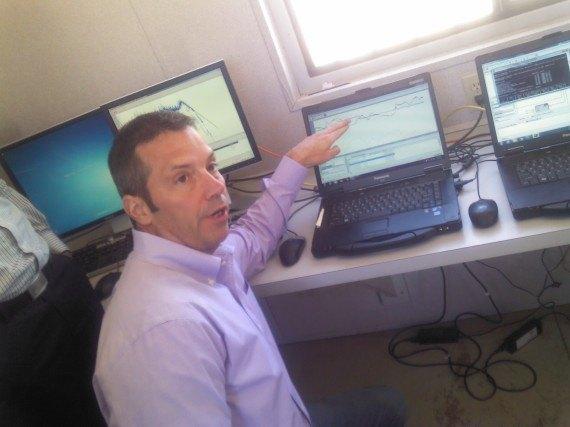

Renewable energy resources are bound to play a larger and larger role in China's energy mix as the world's second largest economy – and largest emitter of greenhouse gases – strives to reduce pollution and forge a healthier, more sustainable economy and society. Renewable energy technology also is playing a growing role in driving growth among U.S. industrial companies – blue-chips as well as fast-growing small- and medium-sized businesses (SMBs).
On Jan. 26, General Electric announced that China's Huaneng Corp. will install 55 of its GE 2.7-120 Brilliant wind turbines – 151 megawatts worth – at its Huaneng Dali Longquan wind farm in southwestern Yunnan province. The deal, which includes a two-year operations and maintenance service agreement, marks GE's largest wind turbine order in China to date.
More than 16 gigawatts of wind power capacity was installed in China in 2013. That represented 45 percent of the worldwide total, according to Global Wind Energy Council statistics. Globally, wind, solar and other emissions-free energy resources will prevent 3,800 million tons of CO2 emissions per year out to 2030, the council highlighted in a press released issued during the United Nations' latest climate treaty negotiations, which took place in Lima, Peru in December.
China: Energy, emissions and economic growth
Improving air quality by reducing carbon and GHG emissions has become a priority for China's central government as environmental pollution continues to take a heavy toll on the country's people, environment and economy. Amid efforts to enforce stricter controls on pollution, the Chinese government shut down 375 factories by late October 2014.
China's central government aims to see wind power capacity increase to 150 GWs by year-end 2017, part and parcel of a broad-based effort to meet at least 15 percent of overall energy output from renewable resources by 2020, GE highlights in a press release. “China has huge potential for wind energy, and we are excited to help customers like Huaneng expand their renewable energy presence,” Anne McEntee, president and CEO of GE’s renewable energy business, was quoted as saying.
“Our goal is to invest in the kind of renewable technology that will bring high-quality, reliable power to the region for many years to come, and the 2.75-120 is a great example of exactly that.”
GE's Brilliant wind turbines
GE's Brilliant line of wind turbines is the latest in the company's ongoing efforts to develop larger, more efficient and cost-effective wind turbines.
Brilliant wind turbines, such as the 2.75-120s that are to be installed at the Huaneng Dali Longquan wind farm in Yunnan, harness the power of the “industrial Internet to analyze tens of thousands of data points every second, driving higher output, improving services productivity and creating new revenue streams for customers,” GE highlights. Developed and tested at GE's wind turbine testing facility in the Tehachapi Mountains east of Los Angeles, Brilliant wind power systems with integrated utility-scale battery storage have also been built.
Taken together, all the technological advances and incremental improvements GE and other wind energy industry participants have made over the years have come together and driven the cost of wind energy down 60 percent. Wind-generated electricity can now be integrated onto the California grid at an unsubsidized cost of 5 to 7 cents per kilowatt-hour (kWh) -- right in line, if not cheaper, than coal-fired power generation, Keith Longtin, general manager of Wind Products for GE Power & Water, stated in an interview.
*Images credit: 1) GE; 2,3) GE, A. Burger
Tech Lowers NOx Emissions in California Oil & Gas Sector


Achieving further reductions in nitrous oxide (NOx) emissions is a focal point for U.S. oil, gas and industrial businesses, as well as automakers, as state air quality authorities work to follow through on proposed new federal NOx emissions limits. Public air quality authorities in Los Angeles and the San Joaquin Valley – hubs for oil production in California for over 100 years – are working with industry players to come up with practical, cost-effective solutions.
A new clean combustion technology from Seattle's ClearSign Combustion Corp. may provide an answer to oil and gas industry players' and regulators' search. Retrofitting 62.5 million Btu/hour once-through steam generators at an Aera Energy LLC heavy-oil production site with its Duplex Burner Architecture (DBA) has validated previous, smaller-scale test results. There, ClearSign's DBA is reducing NOx emissions to levels that meet the San Joaquin Valley Air Pollution Control District's (SJVAPCD) Rule 4320 on NOx emissions.
On Jan. 22, ClearSign followed the successful Aera Energy field test by announcing an agreement to retrofit a three-burner, 12 million Btu/hour vertical cylindrical heater at a Tricor Refining LLC oil refinery in Bakersfield with its Duplex Burner technology.
Cleaner burning and combustion
Inaccessible and largely obscured from public view, massive burners inside petroleum refineries, petrochemical and industrial plants drive the production of fossil fuels and myriad everyday products that we have come to take for granted and seldom, if ever, think much about. These combustion-driven thermal process systems also use vast amounts of energy – fossil-fuel energy. Hence, they are among the largest sources of air and environmental pollution – nitrogen oxides as well as greenhouse gases (GHGs).
Whatever the application, a significant portion of the energy used in thermal process systems winds up as waste energy due to inefficiencies inherent in fossil-fuel combustion, as well as faulty or poorly-maintained equipment or process controls. This waste energy not only results in higher operating costs for owners, but also in NOx and GHG emissions and other forms of environmental pollution.
Once poster children for air pollution, air quality in the Los Angeles and the San Joaquin Valley basins has improved greatly since enactment of the Clean Air Act and state agency efforts to meet NOx and emissions reduction targets. That said, air quality in these areas remains among the worst in the country due to a combination of factors, including climate, geography, population and vehicle density, as well as fossil fuel exploration and production.
ClearSign says its Duplex Burner technology not only delivers reductions in NOx emissions that will enable oil producers and refiners to meet more stringent emissions limits, but also enhances the efficiency, performance and safety of thermal process systems. That translates to healthier financial, as well as environmental and social, bottom lines.
If the new combustion technology matches or exceeds performance at Tricor and the ongoing field test at Aera Energy – a joint venture between ExxonMobil and Shell – “for the first time it will be possible to align environmental goals with goals of process excellence, reduced maintenance and greater capacity,” ClearSign's former CEO Rick Rutkowski, who recently resigned, asserted in an interview.
Oil refineries and air quality standards in the San Joaquin Valley
Working with Advanced Combustion and Process Controls to retrofit the massive vertical cylindrical burner at Tricor's refinery with its DBA will bring an asset that has been out of commission – stranded – since 1984 back to life, ClearSign highlights in its press release.
"Our recent transactions with organizations like Tricor underscore that ClearSign is bringing a transformative technology to the oil and gas market," current ClearSign CEO Stephen Pirnat was quoted as saying. "Shifting economics and evolving environmental regulations are aligning to create a real need for the unique benefits realized by Duplex technology."
The San Joaquin Valley has been a center of oil and gas exploration, development and production in California for over a century. The San Joaquin Valley Air Pollution Control District (SJVAPCD) also has some of the most stringent limits on NOx emissions in the nation for the boilers, steam generators and process heaters used in EOR and oil refineries, Jaime Holt, SJVAPD chief communications officer, stated in an interview.
The latest in a series of more stringent ambient air quality standards stretching back 22 years, SJVAPCD instituted a limit on NOx emissions from these sources as low as 7 parts per million by volume (ppmV) at 3 percent O2 in 2008. Over the last 21 years, SJVAPCD's latest NOx emissions standard for these sources represents a 77 percent decrease, Holt highlighted.
Overall NOx emissions from stationary sources in the San Joaquin Valley have come down over 90 percent and those from EOR, oil refineries and petrochemical plants over 90 percent since 1990, “resulting in significant improvements to air quality in the Valley,” she continued.
“NOx is the key driving pollutant for ozone in the summer and PM2.5 in the winter, so NOx will continue to be the focus of the district's [air pollution reduction] efforts.
“Meeting these new standards will require extensive additional emissions reductions and transformative change, particularly with respect to the over 80 percent of remaining NOx emissions in the Valley now attributed to mobile sources,” Holt stated. “In that effort, we will continue work collaboratively with Valley stakeholders to seek out additional opportunities to further reduce emissions.”
*Images credit: 1) NASA; 2, 3) ClearSign Combustion Corp.; 4) Lost Hills, Kern County pumpjacks, Wikipedia
Women Still Chasing the Elusive American Dream
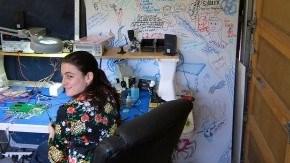

By Geri Stengel
Access to the American Dream shouldn’t be limited to young white men who drop out of colleges and wear hoodies. It should be available to women who have the business experience to build empires.
The way it used to be
Leonora Valvo is an example of what has got to stop. Even with a track record of starting and running two multi-million-dollar businesses in the travel and event industries, which she bootstrapped, it took Valvo 18 months to get past the 20-something male gatekeepers at venture capital firms to raise $2.75 million for etouches, a cloud-based events software company. Now, because she knows angels and VCs, she has more quickly raised money for her latest venture, insightXM, which uses big data to improve experiential events from the perspectives of all: the attendee, event producer and sponsor.
Unfortunately, Valvo’s experience has been common. VCs fund those who look and act like them. Since access to adequate capital to start and grow a company is critical, this has handicapped experienced women. Undercapitalized companies have lower sales, lower profits and generate fewer jobs. Yet, even though women-led companies deliver a better return on investment, these companies start out with 50 percent less capital than all male teams, according to Sources of Economic Hope: Women's Entrepreneurship, a report by the Kauffman Foundation.
Opportunity knocks, but women are slow to answer
A new route to funding is opening up so entrepreneurs like Valvo won’t have to battle sexism and ageism.
Title II of the JOBS Act created a new funding source with the potential to level the playing field for women entrepreneurs: equity financing for companies that are publicly raising money. “Crowdfunding will enable qualified entrepreneurs, both men and women — and particularly women — to raise capital from their community of historic relationships (i.e., people who know, respect and trust them) in a more efficient and transparent manner than previously available,” said Douglas Ellenoff, partner, Ellenoff Grossman & Schole, a leading securities and crowdfunding law firm.
Yet, only 17 percent of companies that raise money publicly through crowdfunding have women on the founding team, according to Crowdnetic, which maintains an equity crowdfunding database.
Crowdfunding neutralizes gender differences
Paige Cattano and her cofounders are passionate about making it easier and less costly for local merchants to market. Wonder Technologies has developed patent-pending technology that enables credit cards to be used as gift cards by any merchant. Wonder successfully raised a few hundred thousand dollars from angels privately. Then it raised a follow-up round of capital publicly through crowdfunding.
Cattano read everything she could about pitching. Everything she read recommended an aggressive style, which was not hers, and probably not the style of most women.
Crowdfunding neutralized the stylistic differences of the initial pitch. With crowdfunding, you do a big push through online marketing, social media and networking to drive people to the crowdfunding platform, but your online marketing material (company description, bios and video) do the initial pitch. Honing their marketing message upfront was critical.
The crowdfunding campaign provided a methodical and focused approach within a concentrated period of time to work existing connections and their connections. The vast majority of investors -- 90 percent -- were people the Wonder cofounders knew or knew people they knew.
Women drive social conscientiousness
The best entrepreneurs scratch their own itch, said Paul Kedrosky, senior fellow at the Kauffman Foundation. User-entrepreneurs -- that is, those who start a company to fill a need they have themselves -- have a much higher survival rate than other startups, according to Kauffman Foundation research.
Amy Cross has an itch: She’s passionate about creating a fair and just world for women. She believes many women feel as strongly about social justice as she does. Women are the more philanthropic and socially responsible gender. Cross wants women to be an even more powerful force for good by helping them use their purchasing power (women make 80 percent of consumer purchase decisions) to buy products from companies that operate in women-friendly ways. BUY UP Index rates parent companies of consumers’ favorite brands in four categories:
- Gender diversity in the boardroom and C-Suite
- Workforce practices, such as maternity leave or flexibility and leadership programs
- Philanthropy and corporate social responsibility
- Advertising and marketing that portrays inclusiveness
She’s also developing an app so consumers can check corporate brand ratings when they’re shopping. Top-ranked companies can reach these activist consumers by making special promotional offers. A consumer can reach out through the app and send emails to companies with a poor rating, telling the company exactly why she will no longer buy its products. Cross is now seeking to raise money from her crowd as a way of demonstrating that consumers are willing to pay for her service even before the service is available.
Crowdfunding provides visibility, connections and loyalty
When an investor buys shares in a large company, it’s not a given that she will become an evangelist for it. All she wants is a return on her investment. She may or may not buy its product. But Cattano found that Wonder investors became the company's best customers. They also became salespeople, spreading the word about Wonder gift cards far and wide.
Women are already proving that they have social capital that converts to real capital via another form of crowdfunding, rewards-based, which has been around for six years. Instead of getting shares in a company for your money, you receive a tangible item or service.
Women made up about 35 percent of the project leaders and 44 percent of the funders on Kickstarter in research conducted by Hebrew University, Kauffman Foundation and the University of California, Berkeley. Women had a 70 percent success rate in getting funded versus 61 percent for men, with further analysis showing that it was not the women’s more modest financial goals that accounted for their higher rate of success.
What’s needed for equity crowdfunding to achieve the success rates that rewards-based crowdfunding has achieved among women? Education.
Equity crowdfunding can be a game-changer for women, but only if women entrepreneurs know if it is appropriate for their companies and how to do it. Providing tools, insight and training is key. Help is on the way.
Geri Stengel is president of Ventureneer, a digital media and market research company that helps corporations reach small businesses through thought leadership. Her book, Forget the Glass Ceiling: Build Your Business Without One, provides women entrepreneurs practical advice for overcoming the barrier they face. Join her in her fight to fixi both sides — women entrepreneurs and investors — of the of women entrepreneurs equation: THE VENTURE CROWD: Everything Ventured, Everything Gained.
The Super Bowl: More Than A Game


By Neill Duffy
Each year, the Super Bowl not only showcases the best in sports entertainment, but also provides an opportunity to put sustainability on a global stage. The NFL has long focused on environmental stewardship through its events and facilities, culminating in an annual showcase of its efforts at the Big Game. And as we look forward to the milestone Super Bowl 50 in 2016, the goal is to take sustainability to a whole new level.
Working in partnership with Bay Area public officials and the NFL, the San Francisco Bay Area Super Bowl 50 Host Committee wants to deliver Super Bowl 50 as the most shared, most participatory and most giving Super Bowl yet … And we want to do so in a “net positive” way – socially, environmentally and economically.
Sustainability has been a foundational element of Super Bowl 50 since day one, even woven into the fabric of the bid for the game. Simply put, it is our commitment to actively look for ways to use the Super Bowl as a platform for good.
We’re approaching our operations with a focus on reducing the impact of our actions on climate change, and responsibly using materials and resources. We also aim to leverage the immense engagement power of the Super Bowl to inspire fans to embrace sustainability personally. And finally, we are investing in our region by donating 25 percent of all monies raised by the Host Committee to nonprofits focused on improving the lives of young people living in the Bay Area through our legacy initiative, 50 Fund.
Why? Because we want to deliver a Super Bowl experience that will not only set the bar for the next 50 Super Bowls, but will also celebrate our communities and the people of the Bay Area like no other event has done before. And that celebration includes creating positive impact that lasts long after the final whistle is blown.
Pie in the sky? We don’t think so. Our approach to operating in a “net positive” way has become a central organizing principle which drives all of our decisions, helping us to plan more efficiently, more effectively and more responsibly.
Being “net positive” is also creating opportunities for us to engage with corporate sponsors in new ways, enabling them to share their sustainability story and showcase their sustainable products and services to an engaged and passionate audience.
In 2016, after Super Bowl 50 ends at Levi’s Stadium, we hope our scorecard shows that we put on a great event, we made a real impact on the community and we made an impact that will last long-term. Because that is a game where everyone is a winner.
Image credit: Flickr/Anthony Quintano
Neill Duffy provides brands, sports properties and non-profits with strategic, commercial and engagement solutions that embrace “profit and purpose” to achieve positive social, environmental and economic impacts. Neill is Co-Chair of the San Francisco Bay Area Super Bowl Host Committee Sustainability Sub Committee and tasked with leading the Host Committee’s sustainability efforts around Super Bowl 50. about.me/neillduffy